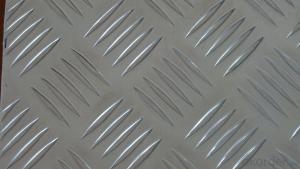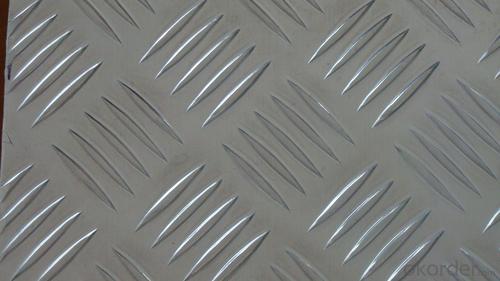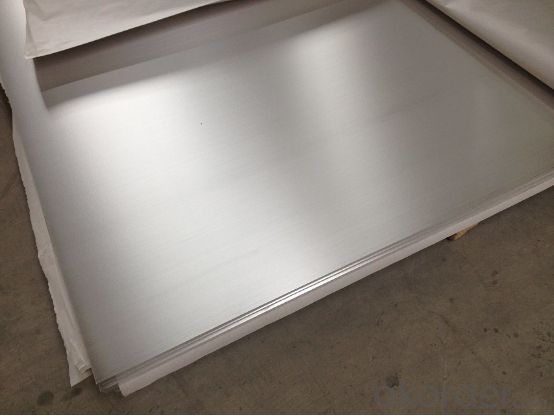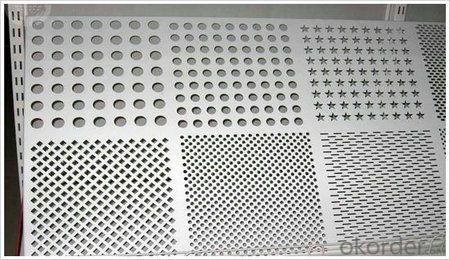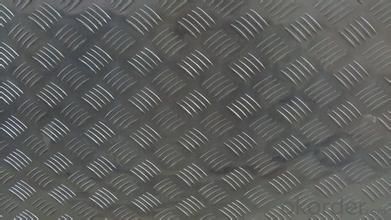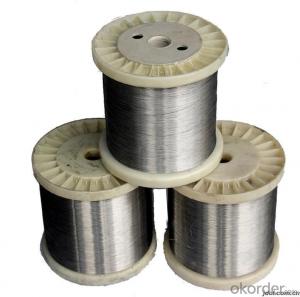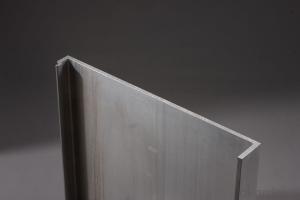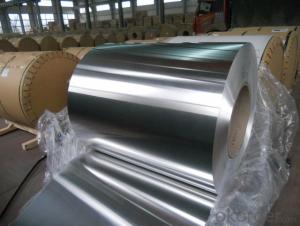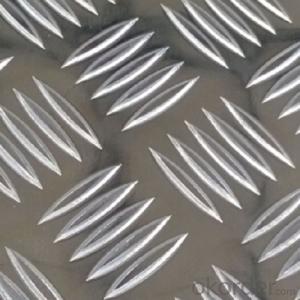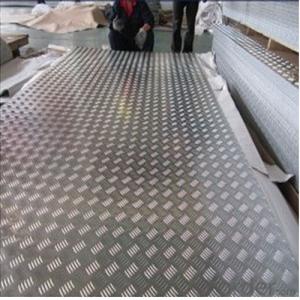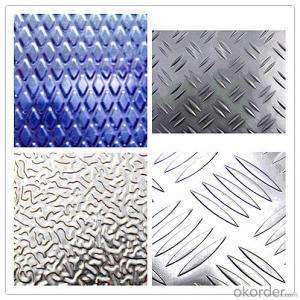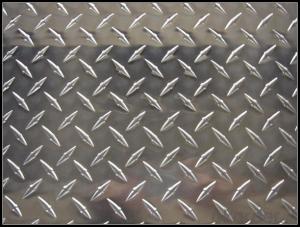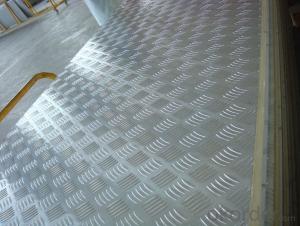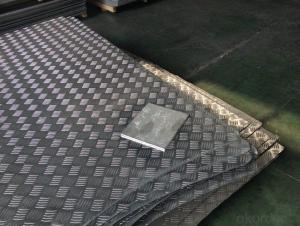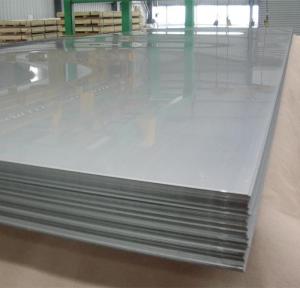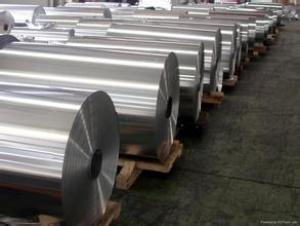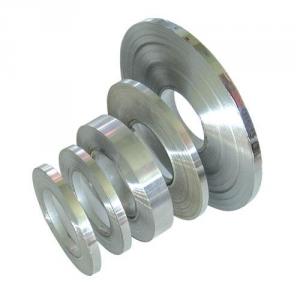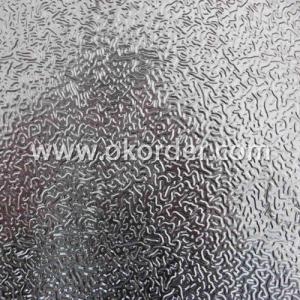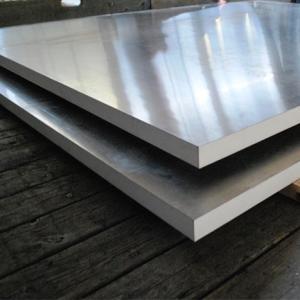Aluminum Tread Plate in 3 bar,4 bar,5 bar, Diamond Plate
- Loading Port:
- Shanghai
- Payment Terms:
- TT OR LC
- Min Order Qty:
- 8 m.t.
- Supply Capability:
- 10000 m.t./month
OKorder Service Pledge
OKorder Financial Service
You Might Also Like
Specification
aluminum chequered plate are widely usd for bus, cars and shipping vessel as the floor....
Aluminum tread plate is also called anti-slide aluminum sheet which is widely used in manufacturing vehicles, ships, washing machines, refrigerator shell, etc.
Specification:
Alloy: 1050, 1060, 1100, 3003, 3105, 5052
Temper: O, H12, H14, H16, H18, H22, H24, H26, H32
Thickness: 1.0~10mm
Width: 1000~1600mm
Length: 1000~6000mm
Packing:
One roll in an individual box or printed PP bag
Certain quantities in a standard carton
Depends on customer’s request
Service
1. We have the good and professional team, have a good after-sales service.
2. Accept any drawings or your samples to develop new product.
3. Offer relateive technical support,quick response,all your inquire will replied within 24 hours.
4. OEM, buyer design, buyer label services provided.
5. Have the certification of ISO 9001, SGS.
6. Special discount and protection of sales area provided to our distributor.
FAQ
Q1:Do you provide sample? How many days will samples be finished?
Free samples will be provided if needed, but customers should undertake shipping cost or freight charges, samples will be finished in 5-7days
Q2: Can we visit your factory?
Welcome to our factory at any time.
Q3: Complaint solving process
Finding your salesman—Salesman provide you the solution (If it’s our responsibility, we will resend substitutes or return money or provide discount for your next order, etc.; If it’s shipping company’s responsibility, we will also help you until the problem is resolved.) —If salesman can’t solve your problem, please call our manager .
Q4: Delivery time
3~30working days after confirming the payment. If the order is urgent, we will push our workers to finish in advance.
Q5: What's your MOQ?
Normally 8MT are requested as the minium order quantity ,we shall give
additional instructions in special circumstances.
Q6: What are the terms of payment and currencies do you accept?
T/T or L/C is accepted, currently we appreciated your payment through
USD,EUR, RMB
Q7: Do you accept customized orders?
Yes, we do. Your customized orders are always welcomed. Please kindly offer us your samples or drawings, so that we can customize the products according to your preferences. About any further detail, please feel free to contact us.
Q8: What information should I let you know if I want to get a quotation?
Your detailed requirements regarding the products's dimensions, including shape, thickness, top out (length*width*height), and your order quantity are highly appreciated if you want further information about our quotation
Q9: How about the mass production?
The lead time of mass production depend on quantity, usually 25-30days (20FT) .
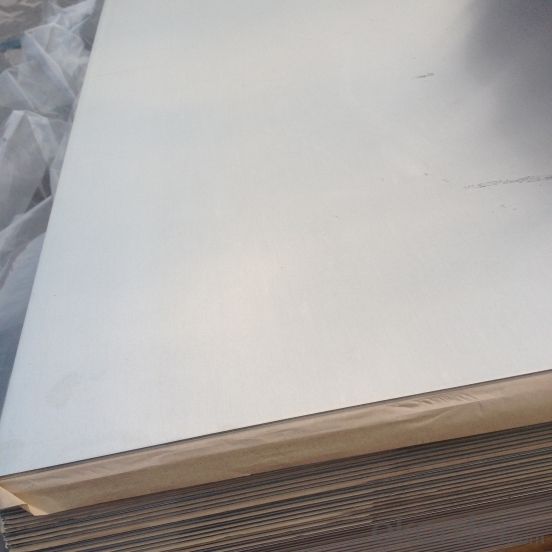
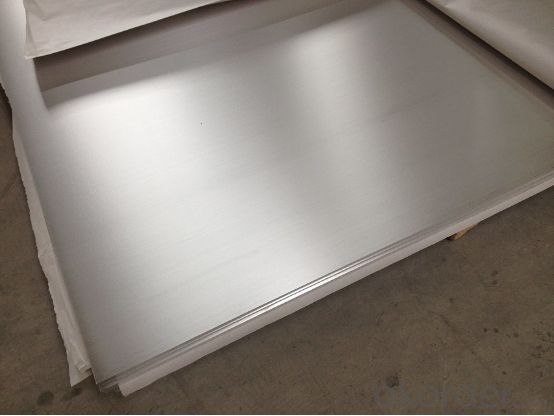
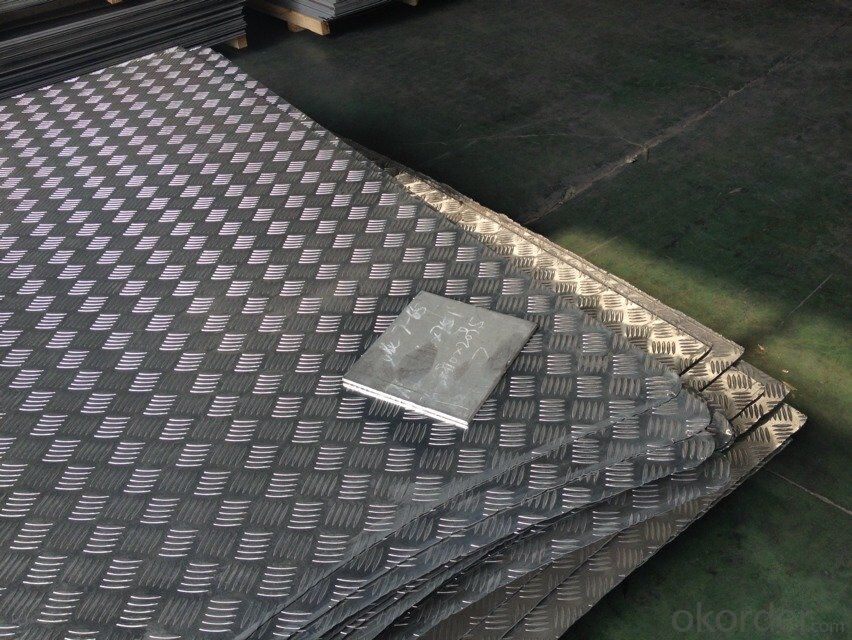
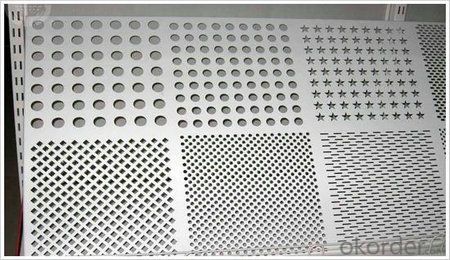
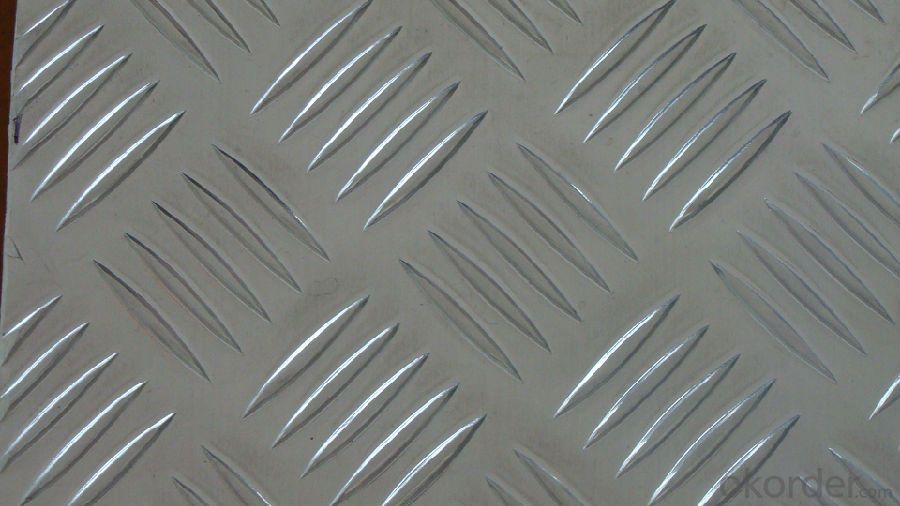
- Q: This question asks for methods to verify the quality of aluminum sheets before purchasing them.
- <p>To ensure the quality of aluminum sheets, first, check for certifications such as ISO or ASTM standards. Inspect the surface for any defects like scratches, dents, or unevenness. The color should be uniform and the edges should be smooth. Request a sample and perform a bend test to check for flexibility and strength. Ensure the thickness is consistent as specified. Look for a reputable supplier with good customer reviews. Lastly, consider the price; if it's too low, it might indicate compromised quality.</p>
- Q: How do aluminum sheets perform in extreme temperatures?
- Aluminum sheets are known for their excellent performance in extreme temperatures. Aluminum has a high melting point, around 660 degrees Celsius, which makes it capable of withstanding high temperatures without deforming or melting. In extreme heat, aluminum sheets have a low thermal expansion rate, meaning they will not expand or contract significantly, ensuring dimensional stability. This makes them ideal for applications in industries such as aerospace, automotive, and construction, where extreme temperatures are common. Similarly, in extremely cold temperatures, aluminum sheets retain their strength and durability, unlike some other metals that become brittle and prone to cracking. Additionally, aluminum has excellent thermal conductivity, allowing it to distribute heat evenly, which is beneficial in applications where heat dissipation is crucial. Overall, aluminum sheets perform exceptionally well in extreme temperatures, making them a reliable choice for various industries.
- Q: This question asks for precautions or methods to protect aluminum sheets from damage during the installation process.
- <p>To ensure that the installation process does not damage aluminum sheets, follow these steps: Use protective gloves to avoid scratches from hand oils or dirt. Employ non-marring tools to prevent any indentations or marks. Handle the sheets carefully to avoid bending or denting. Keep the surface clean and dry to prevent any chemical reactions or stains. Use appropriate support structures to distribute weight evenly and prevent warping. Always follow the manufacturer's guidelines for installation to avoid any improper handling that could lead to damage. Regularly inspect the sheets for any signs of damage during the installation process and address any issues promptly.</p>
- Q: Is it possible to utilize aluminum sheets for creating signs or banners?
- <p>Yes, you can use aluminum sheets to make signs or banners. Aluminum is a popular choice due to its durability, lightweight, and resistance to weather conditions. It can be easily cut, shaped, and printed on, making it ideal for outdoor signage. Additionally, aluminum sheets can be coated or laminated to enhance their visual appeal and protect against scratches and fading.</p>
- Q: 3mm heavy aluminum plate, multiple cubic meters per cubic meter?
- If calculated according to 2.73 density, the theory of a 3MM*1000MM*1000MM weight is 8.19KG. and the specifications of the aluminum flat stacked together what number should be in the 300-333 cubic meters of estimated.
- Q: What are the dimensions and thickness options for aluminum sheets?
- The dimensions and thickness options for aluminum sheets vary depending on the specific requirements and applications. Aluminum sheets are available in a wide range of sizes and thicknesses to suit different needs. In terms of dimensions, aluminum sheets can be found in various widths and lengths, typically ranging from 36 inches to 72 inches in width and 96 inches to 144 inches in length. These dimensions can, however, vary depending on the supplier and specific product. The thickness options for aluminum sheets also vary. The thickness is typically measured in gauge, with lower gauge numbers indicating thicker sheets. Aluminum sheets are available in various gauges, ranging from 0.006 inches (very thin) to 0.5 inches (thicker) or even thicker for specialized applications. It's important to note that specific dimensions and thickness options may vary depending on the supplier and the specific grade of aluminum being used. It is always recommended to consult with a supplier or manufacturer for precise information on available dimensions and thickness options for aluminum sheets.
- Q: What are the weight considerations when using aluminum sheets?
- When using aluminum sheets, weight considerations are important due to the lightness of aluminum. It is crucial to determine the thickness and size of the sheet based on the intended application to ensure structural integrity and proper load-bearing capacity. Additionally, the weight of aluminum sheets may affect transportation, installation, and overall handling requirements.
- Q: What is the final concentration of aluminum cation?
- You have to be able to determine the number of moles of Al+3 that each solution contributes to the final solution: 1. aluminum chloride: AlCl3 Multiply the volume (in L) by the molarity to determine the number of moles of each compound dissolved in solution. 0.0431 L x 0.279 M = 0.0120 mol AlCl3 in solution When the AlCl3 in placed in the water, it dissociates to form the following ions: AlCl3 -- Al+3 + 3Cl- So for every one mole of AlCl3 placed in the water, one mole of aluminum ions will dissociate. Therefore, since we have 0.0120 mole of AlCl3 in the solution, that means that the aluminum chloride will contribute 0.0120 Al+3 ions to the final solution. 2. Aluminum sulfate: Al2(SO4)3 Multiply the volume (in L) by the molarity to determine the number of moles of each compound dissolved in solution. 0.0146 L x 0.464 M = 0.00677 mol Al2(SO4)3 in solution When the Al2(SO4)3 in placed in the water, it dissociates to form the following ions: Al2(SO4)3 -- 2Al+3 + 3(SO4)-2 So for every one mole of Al2(SO4)3 placed in the water, two mole of aluminum ions will dissociate. Use the mole ratios of the dissociation reaction to determine the number of moles of Al+3 ions that the aluminum sulfate contributes to the solution. 0.00677 mol Al2(SO4)3 x (2 mol Al+3 ions / 1 mol Al2(SO4)3) = 0.01354 mol Al+3 ions Therefore, the total number of Al+3 ions in solution is the sum: 0.01354 + 0.0120 = 0.02554 mol Al+3 ions The last piece of information needed to determine the concentration of the final solution is the volume of the final solution. Since the two volumes were mixed, the volume of the final solution will be the sum of the two solutions. 0.0431 L + 0.0146 L = 0.0577 L Therefore, to calculate molarity: Molarity = moles of solute / liters of solution Molarity = 0.02554 mol / 0.0577 L = 0.443 M Al+3
- Q: What type of aluminum plate does the traffic sign use? 1100?
- Model is not important, can meet the standard requirements on the line!
- Q: How do I cut aluminum sheets?
- To cut aluminum sheets, you will need a few tools and precautions. Here's a step-by-step guide to help you through the process: 1. Safety first: Always wear protective gear, including safety glasses, gloves, and a dust mask to protect yourself from the metal shavings. 2. Choose the right tool: There are a few options for cutting aluminum sheets, depending on their thickness. For thin sheets (up to 1/8 inch), a manual hand shear or a utility knife with a sharp blade can be sufficient. For thicker sheets, you may need power tools such as a jigsaw, circular saw, or a specialized aluminum-cutting saw. 3. Measure and mark: Use a measuring tape, ruler, or a straightedge to determine the desired size of the sheet. Mark the cutting line on the sheet using a permanent marker or a scribe. 4. Secure the sheet: Use clamps to secure the aluminum sheet firmly to a workbench or a cutting surface. This will prevent the sheet from moving during the cutting process, ensuring accurate cuts. 5. Cutting with a hand shear or utility knife: For thin sheets, start by aligning the cutting edge of the shear or utility knife with the marked line. Apply firm and even pressure to make a straight cut. If using a utility knife, you may need to score the sheet several times before it breaks off. 6. Cutting with power tools: If using a jigsaw, circular saw, or an aluminum-cutting saw, make sure you have the appropriate blade for cutting metal. Set the saw's cutting depth slightly deeper than the thickness of the aluminum sheet. Align the blade with the marked line and slowly guide the saw along the cutting path, ensuring a smooth and steady motion. Apply light pressure and let the saw do the work. 7. Finishing touches: Once the cut is complete, inspect the edge for any burrs or roughness. Use a metal file or sandpaper to smooth out any imperfections. Remember, practice caution and take your time when cutting aluminum sheets. It's always a good idea to test your cutting method on a small scrap piece before proceeding with the actual sheet.
Send your message to us
Aluminum Tread Plate in 3 bar,4 bar,5 bar, Diamond Plate
- Loading Port:
- Shanghai
- Payment Terms:
- TT OR LC
- Min Order Qty:
- 8 m.t.
- Supply Capability:
- 10000 m.t./month
OKorder Service Pledge
OKorder Financial Service
Similar products
Hot products
Hot Searches
Related keywords
